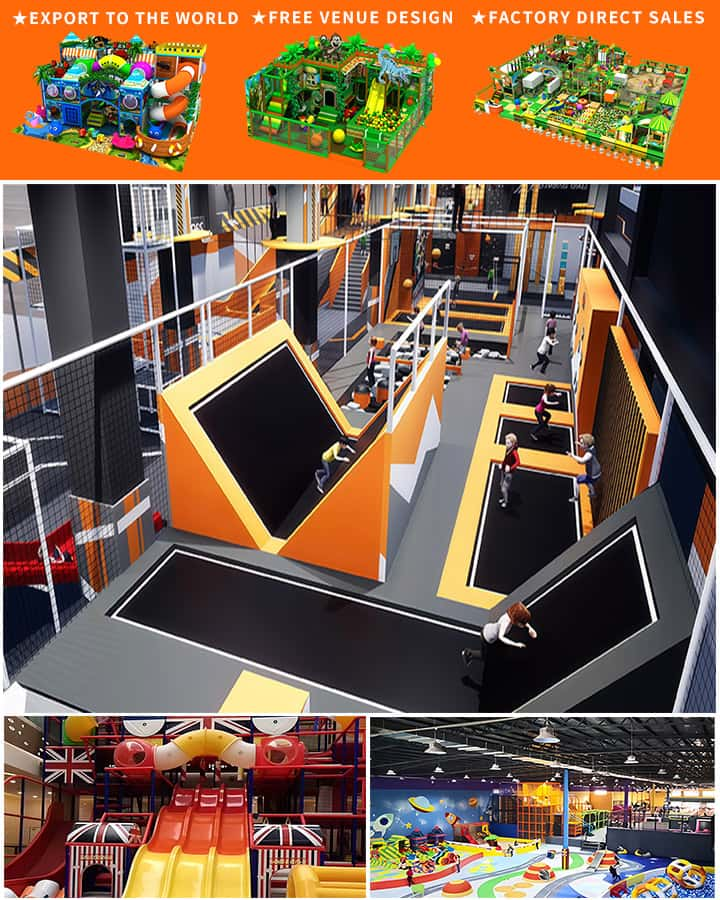In today’s fast-paced world, finding a safe and engaging space for children to play can be a challenge. Indoor child play areas have become increasingly popular as they provide a controlled environment where kids can explore, learn, and have fun regardless of the weather outside. This article delves into the key aspects of indoor play areas, their benefits, and tips for choosing the best one for your little ones.
The Benefits of Indoor Child Play Areas
1. Safety First
One of the primary advantages of indoor play areas is their emphasis on safety. These facilities are typically designed with soft flooring, padded equipment, and secure barriers to protect children from injuries. Additionally, many indoor play centers maintain strict hygiene standards to keep germs at bay, ensuring a healthier environment for kids.
2. Weather-Proof Fun
Rain or shine, indoor play areas offer a consistent spot for children to burn off energy. This reliability is particularly beneficial during harsh weather conditions when outdoor activities may not be an option. Parents can enjoy peace of mind knowing their kids will have a place to play, no matter what the weather forecast holds.
3. Educational Opportunities
Many indoor play areas are designed to be more than just places for physical activity; they also serve as educational spaces. Interactive exhibits, puzzles, and sensory toys can stimulate cognitive and motor skill development. Some centers even incorporate learning elements like basic math, language skills, and science concepts into their play structures.
4. Social Interaction
Indoor play areas provide excellent opportunities for children to interact with peers, fostering social skills such as sharing, teamwork, and communication. These settings often encourage group activities and cooperative games, helping kids build friendships and learn how to navigate social situations.

Choosing the Right Indoor Play Area
1. Age Appropriateness
When selecting an indoor play area, ensure it caters to your child’s age group. Many facilities offer age-specific zones, ensuring that the equipment matches the developmental stage of the children using them. For instance, toddlers might need a different setup compared to preschoolers or school-age children.
2. Hygiene and Safety Standards
Check the cleanliness and maintenance protocols of the facility. Look for well-maintained equipment, clear signage outlining safety rules, and staff who prioritize the well-being of the children. Hygiene measures, such as regular sanitizing of toys and surfaces, are crucial in preventing the spread of germs.
3. Variety of Activities
A good indoor play area should offer a range of activities to cater to different interests and abilities. From climbing walls and slides to art stations and quiet reading corners, variety ensures that every child finds something enjoyable to do. This diversity helps in keeping kids engaged and entertained for longer periods.
4. Parental Amenities
Don’t forget to consider what amenities are available for parents. Comfortable seating areas, cafes, or observation decks allow adults to relax while keeping an eye on their children. Some facilities also offer Wi-Fi and charging stations, making it convenient for parents who need to stay connected.
5. Location and Accessibility
Choose a play area that is conveniently located and easily accessible. Consider factors such as parking availability, public transportation options, and proximity to your home or workplace. Easy access ensures that you can visit the play area frequently without adding stress to your schedule.
Making the Most of Your Visit
1. Plan Ahead
To avoid disappointment, check the play area’s website or call ahead to ensure it is open and not hosting a private event. Plan your visit during off-peak hours if possible to enjoy a less crowded experience.
2. Dress Appropriately
Encourage your child to wear comfortable clothing that allows for easy movement. Socks with grips are often recommended for safety reasons, especially on slippery surfaces. Bring a change of clothes in case of accidents or spills.
3. Set Expectations
Teach your child about the rules of the play area before arriving. Discuss the importance of taking turns, playing safely, and respecting others’ space. Clear expectations help prevent conflicts and create a more enjoyable experience for everyone.
4. Stay Engaged
While it’s great for children to explore independently, parental involvement is also important. Engage with your child by playing alongside them, asking questions about their activities, and offering gentle guidance when needed. This interaction enhances bonding and supports their development.
Conclusion
Indoor child play areas offer a multitude of benefits, from safety and convenience to educational value and social opportunities. By carefully selecting the right facility and planning your visits, you can provide your children with enriching experiences that cater to their needs and interests. Whether you’re looking for a rainy day retreat or a regular hangout, these spaces are sure to delight both kids and parents alike.




